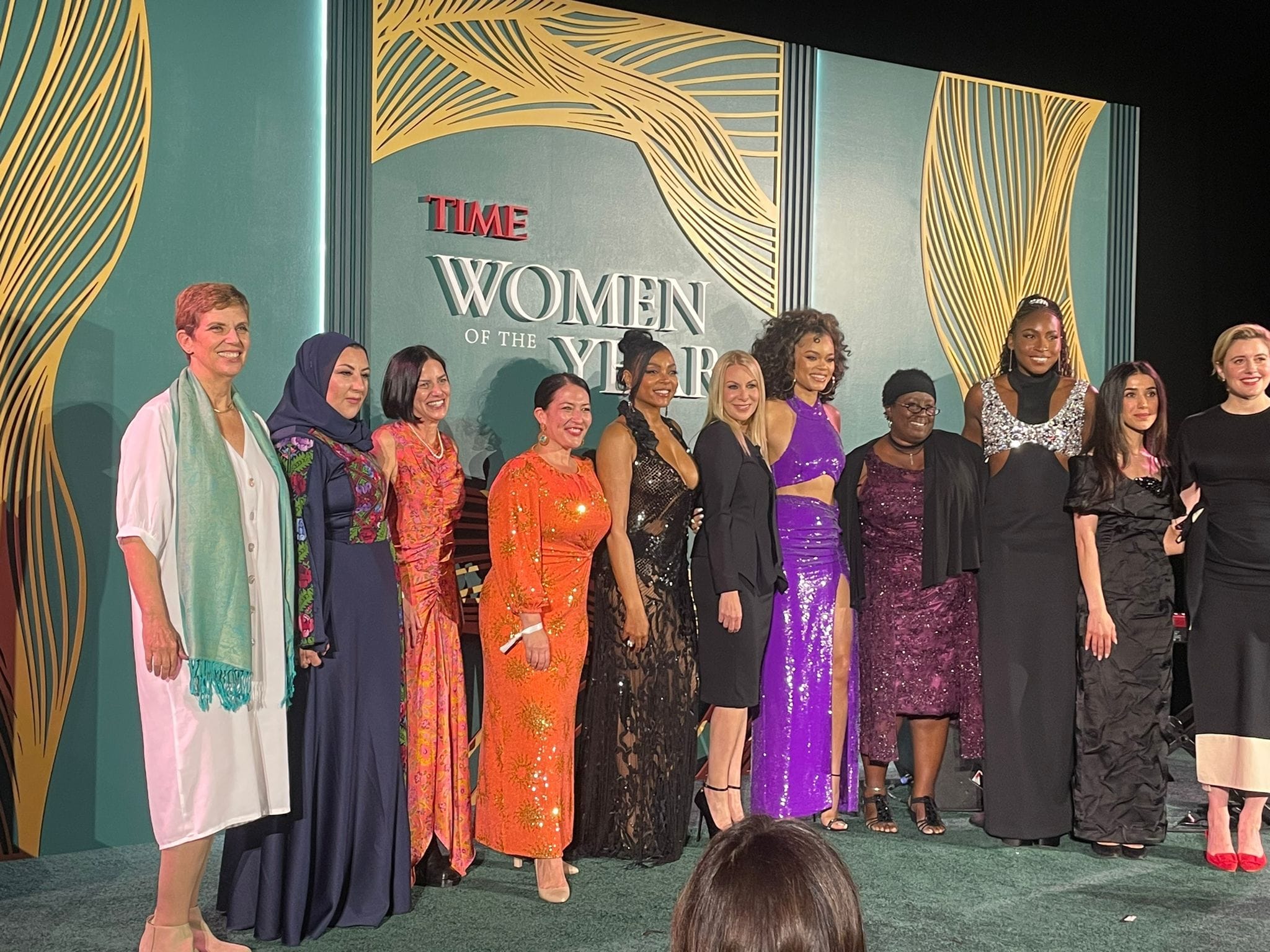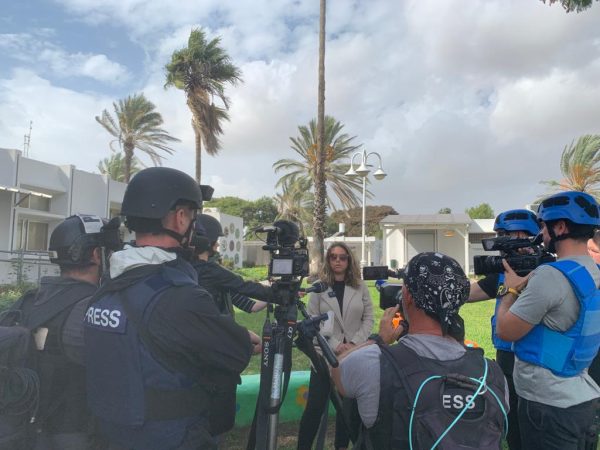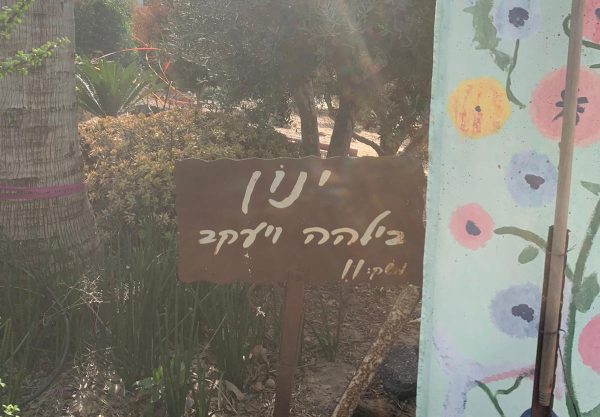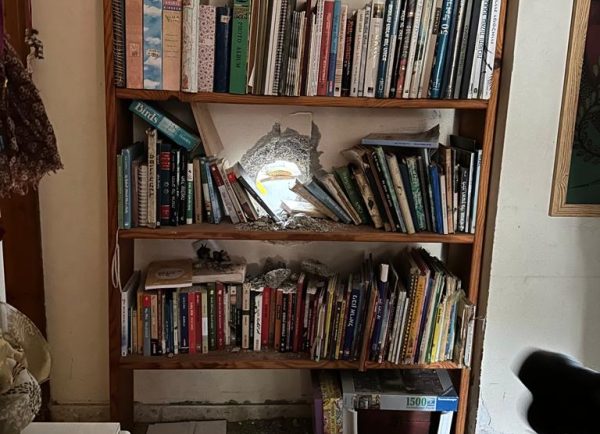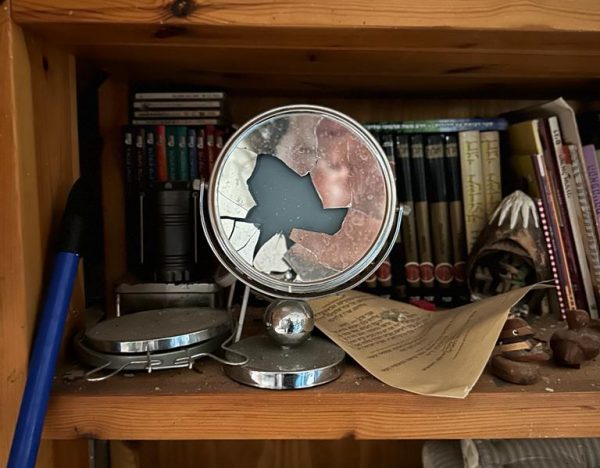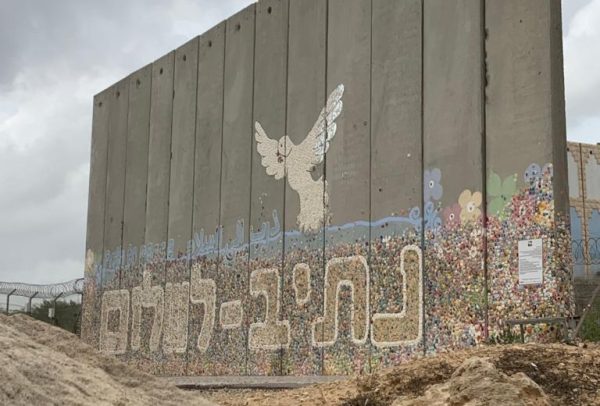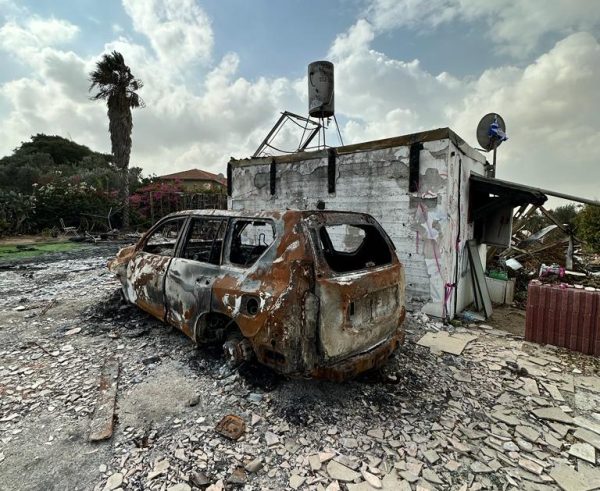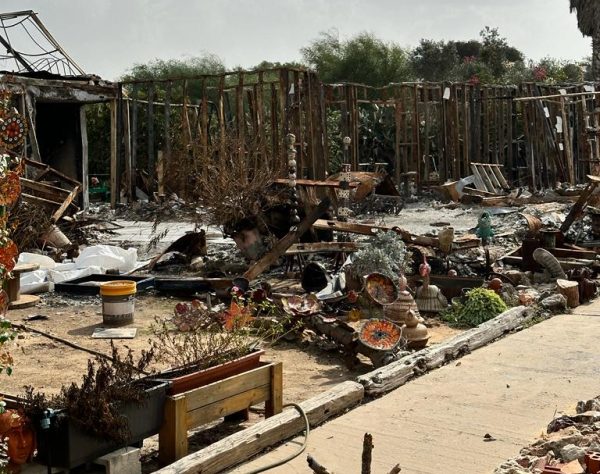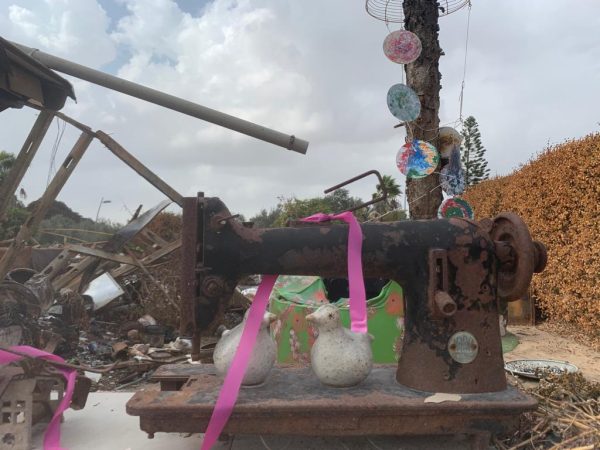Eden Kleban Pakter and Mushka Kurkos
Sunday, the beginning of the seventh week of the war, 44 days since October 7th. We joined a group of journalists on a visit sponsored by the Government Press Office, to Netiv Ha’asara – a moshav in the northwest Negev, belonging to the Ashkelon Beach Regional Council, located 100 meters from Gaza.
We began our morning waiting at a meeting point in Jerusalem with the many journalists who were invited to join the tour. Most were members of the foreign press who were invited by the IDF Spokesman to get a firsthand look at the evidence of the massacre perpetrated by Hamas against civilians on October 7th. Holding cups of coffee, wearing fleece jackets that barely protected us from the Jerusalem wind, we were surprised to see the foreign journalists decked out from head to food with ceramic protection: Helmets, vets, shoes. “What an over-exaggeration”, we joked among ourselves. They’re so disconnected, they come to the Middle East to cover the fighting and think they’re in a war zone…
Or maybe we’re the ones over-exaggerating? Later, in the bus on the way to Netiv Ha’asara, we started hearing irregular gunfire and explosions close to us. Maybe we’re so used to war that we’re not taking it seriously enough? Suddenly we heard a huge explosion. We jumped. One of the soldiers guarding the group approached us, and in an attempt to calm us down said, “Those are our explosions. The gunfire that you hear is from our side.” As he spoke, we shared a long moment of sadness.
A life that is no more
We meet in the center of the Netiv Ha’asara moshav, next to the sign directing us to the grocery store, the swimming pool and the synagogue. Hila Fenlon, a member of this farming community, welcomes us. Like us, she stands out against the foreign male reporters dressed in their ceramic protective gear. She’s wearing regular clothes, without protective gear.
You can understand that someone who felt death knocking at her door no longer has a need for ceramic protection. The foreign press swoops in on her with their microphones and their cameras, not wanting to miss a word of the firsthand description of the horrendous disaster. By pushing and maneuvering, we manage to approach Hila and ask her to tell us the story of the residents.
Netiv Ha’asara is the closest moshav to northern Gaza. A total of 100 meters between them and the border. Less than a kilometer between then and Beit Lahiya. When the army entered the moshav that day, the terrorists were at the entrance to Hila’s house. “In another few minutes, we would have been next”, she says. Twenty of the moshav’s inhabitants were murdered, four of them belonging to the “first responders”. For 12 hours, the residents were stuck in their homes, terrified, waiting for someone to rescue them, to save their lives. Without electricity or Internet, to the background of gunfire and explosions.
Hila accompanies us on the walking tour. As she describes the atrocities that took place, she tries to get permission to bring us into the homes of the inhabitants so that we can get a small sense of what they experienced that day. The moshav looks like a ghost town. Everything is frozen in time. Everyone in the street is military – except for a black cat that runs around the abandoned swimming pool, trying to escape the drops of rain that have begun to fall.
All of the residents have been evacuated. The homes that were closest to the line of fire suffered the most damage. An anti-tank missile destroyed the home and farm of Bilha and Ya’acov Yinon, a couple who in the past year had helped transport children needing medical care from the Gaza Strip to hospitals in Israel.
We tour the ruins. Bilha’s artwork peeks out at us from the dust, the remains of the house, and the burned cars of Bilha and her husband, which remain in the parking lot like metal statues erected to preserve the moment. Colorful, optimistic artwork mixed with ashes and broken shards. Statues of doves facing each other inside of an old sewing machine – and behind them, total destruction. There was once beauty here. There was life – and now there isn’t.
“Our moshav was attacked by Hamas’ commando forces”, Hila claims, pointing at the spot where one of the first drones landed. “The terrorists here were well-trained and ready to annihilate us.”
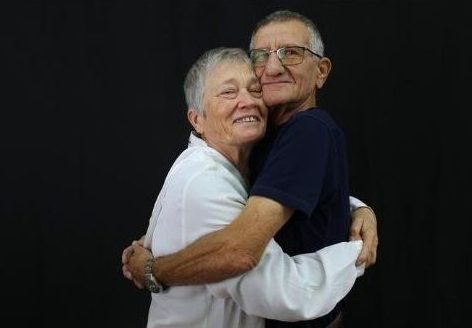
Hope and catastrophe
We continued walking and reached another home. Nurit, the mom, was killed here by a demolition brick thrown into the house. Alon took his three daughters and hid with them behind the bedroom door, which he left open. Despite his natural instinct to close it, he thought that if the terrorists saw an open door they wouldn’t come in, because they’d think there was no one hiding there.
That’s what saved them.
Two of his daughters, who were injured by the brick that was thrown in earlier, kept absolute silence while the terrorists roamed the house. They can’t say whether they were there for minutes or hours. In the meantime, the terrorists destroyed the house. A shattered aquarium, a hole in the bookcase, possessions strewn on the floor, broken glass – all testimony to the inferno that took place here.
During all this time, Nurit’s body was lying in the house. While hiding with his daughters, Alon came out every few minutes to hug and kiss his wife’s body. We followed the path that Alon took during those crucial hours. Your heart breaks for a father who saved his children but lost his beloved.
Stickers saying “Democracy”, “Peace” and “The Women’s Struggle” decorate the house. In the garden, colorful bird weathervanes twirl rapidly in the wind, as if to symbolize the remnants of hope together with the remnants of catastrophe.
The peace wall
The security personnel accompanying us ask us to hurry, afraid that a mortar shell will fall on the moshav and more people will be hurt. The area we’re in is considered part of the active war zone. We continue walking to the wall that surrounds the community. “The peace wall”, Hila says. It’s a little ironic that this wall is the only thing separating us from the incessant battle taking place on the other side.
“This tall, decorated wall symbolized our desire to return to the old days, when there was no wall between Gaza and us and we passed freely back and forth,” says Hila. “Even during war we need to talk about peace. That sounds distant now, but we must talk about peace.”
A variety of peace initiatives led to the wall’s decoration over the years. The same wall that on October 7th apparently saved many residents by preventing an even greater massacre – Hamas forces entered the moshav by air, using paragliders. This meant that fewer terrorists managed to get in.
Will you come back to live here, we ask Hila as we’re walking towards the wall. “We hope to return here in peace”, she replies, and tells us that for most of her life, like many other residents, she ignored the explosions heard on the other side of the fence, and the Kassams that were fired from neighboring Gaza.
Hila’s family was evacuated two days after the massacre. ”I have workers I need to take care of”, she explains, and points to the Thai workers that the government doesn’t bother evacuating. “I couldn’t leave them here alone”. In the end, the “Brothers and Sisters in Arms” group did an organized evacuation of the workers and found them decent housing. Only then did she feel that she could leave together with her family and dogs.
These days Hila is engaged in explaining, mainly in English and to the foreign press, what happened here. She’s had to develop a protective shield in order to be able to describe the atrocities over and over. But she feels it’s important for people to understand exactly what happened.
She says that she sometimes feels like the press only wants to shoot the most painful, difficult photos, showing the damage and the destruction. “But they had a meticulously planned, specific route of destruction”, she explains. “The terrorists were well focused. They hardly worried about destroying property; rather, they focused on killing as many people as possible.”
On our way back to the bus, Hila took us to a bathroom in a house whose inhabitants had been evacuated. “Are they all alive?” we asked worriedly before we dared to enter. “Yes”, she assured us. She announced in English to the foreign press that “the women will use the lavatory and the men will make do outside.” We smiled and remembered our initial meeting with her, with no vest or helmet, and wondered where she gets the courage – near explosions and gunfire, in the shadow of the war – to keep telling the story of what happened on October 7th in Netiv Ha’asara.

